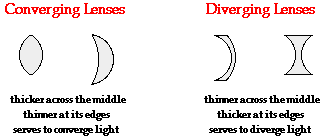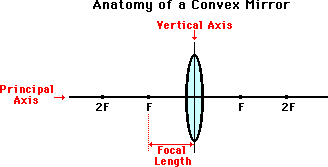The word
lens comes from the Latin name of the
lentil, because a double-convex lens is lentil-shaped. The genus of the lentil plant is
Lens, and the most commonly eaten species is
Lens culinaris. The lentil plant also gives its name to a
geometric figure.
The oldest lens artifact is the
Nimrud lens, which is over three thousand years old, dating back to ancient
Assyria.
[3] David Brewster proposed that it may have been used as a
magnifying glass, or as a
burning-glass to start fires by concentrating sunlight.
[3][4] Assyrian craftsmen made intricate engravings, and could have used such a lens in their work. Another early reference to
magnification dates back to
ancient Egyptian hieroglyphs in the 8th century BC, which depict "simple glass meniscal lenses".
[5]
The earliest written records of lenses date to
Ancient Greece, with
Aristophanes' play
The Clouds (424 BC) mentioning a burning-glass (a
biconvex lens used to
focus the
sun's rays to produce fire). The writings of
Pliny the Elder (23–79) also show that burning-glasses were known to the
Roman Empire,
[6] and mentions what is arguably the earliest use of a
corrective lens:
Nero was said to watch the
gladiatorial games using an
emerald[7] (presumably
concave to correct for
myopia, though the reference is vague). Both Pliny and
Seneca the Younger (3 BC–65) described the magnifying effect of a glass globe filled with
water.
In the 10th century,
Ibn Sahl used what is now known as
Snell's law to calculate the shape of lenses.
[8]
Excavations at the
Viking harbour town of
Fröjel,
Gotland,
Sweden discovered in 1999 the rock crystal
Visby lenses, produced by turning on pole-lathes at Fröjel in the 11th to 12th century, with an imaging quality comparable to that of 1950s
aspheric lenses. The Viking lenses were capable of concentrating enough sunlight to ignite fires.
[9]
Widespread use of lenses did not occur until the use of
reading stones in the 11th century and the invention of
spectacles, probably in
Italy in the 1280s. Scholars have noted that spectacles were invented not long after the translation of
Ibn al-Haytham's Book of Optics into Latin, but it is not clear what role, if any, the optical theory of the time played in the discovery.
[5][10] Nicholas of Cusa is believed to have been the first to discover the benefits of
concave lenses for the treatment of
myopia in 1451.
The
Abbe sine condition, due to
Ernst Abbe (1860s), is a condition that must be fulfilled by a lens or other optical system in order for it to produce sharp images of off-axis as well as on-axis objects. It revolutionized the design of optical instruments such as
microscopes, and helped to establish the
Carl Zeiss company as a leading supplier of optical instruments.



